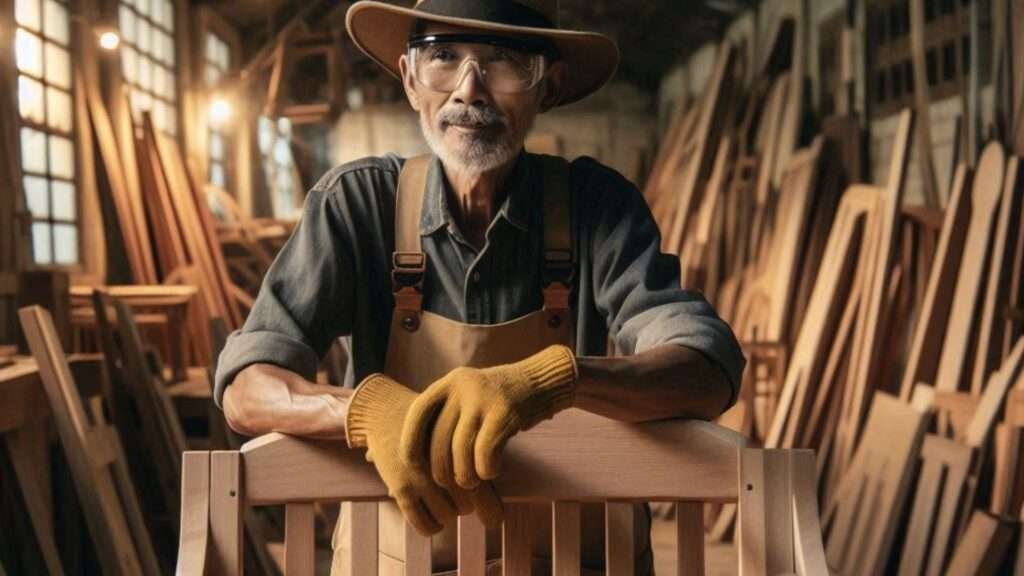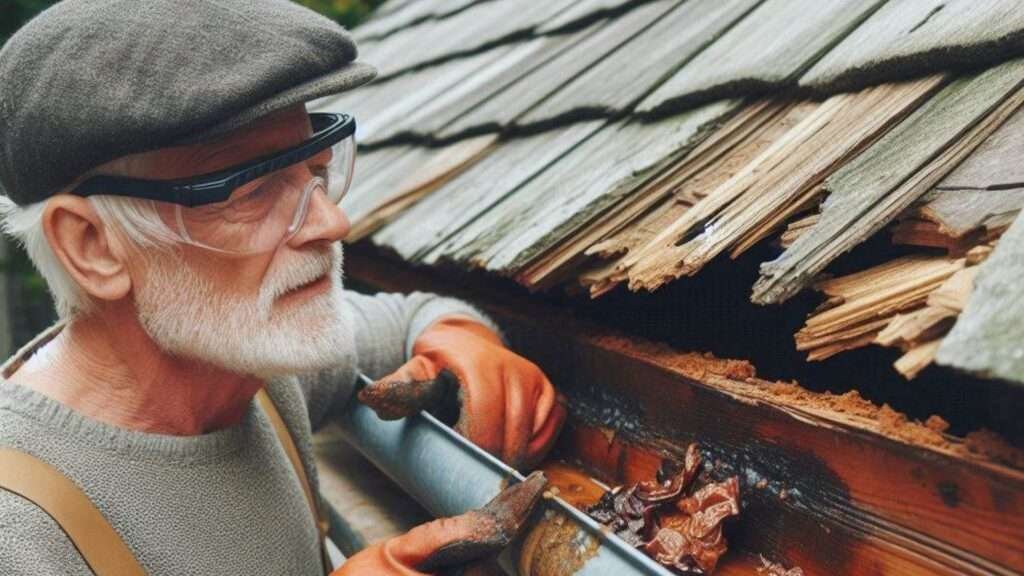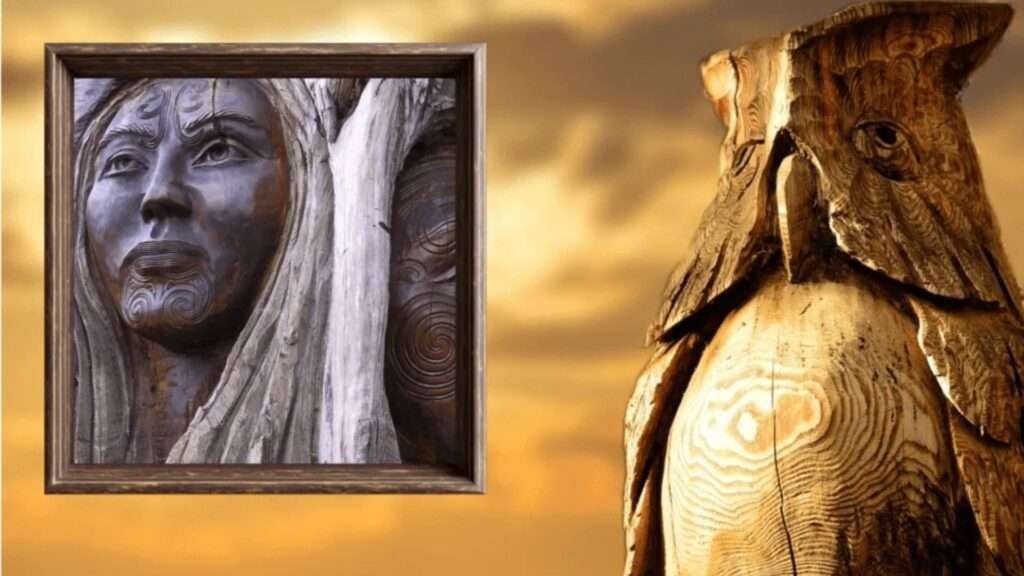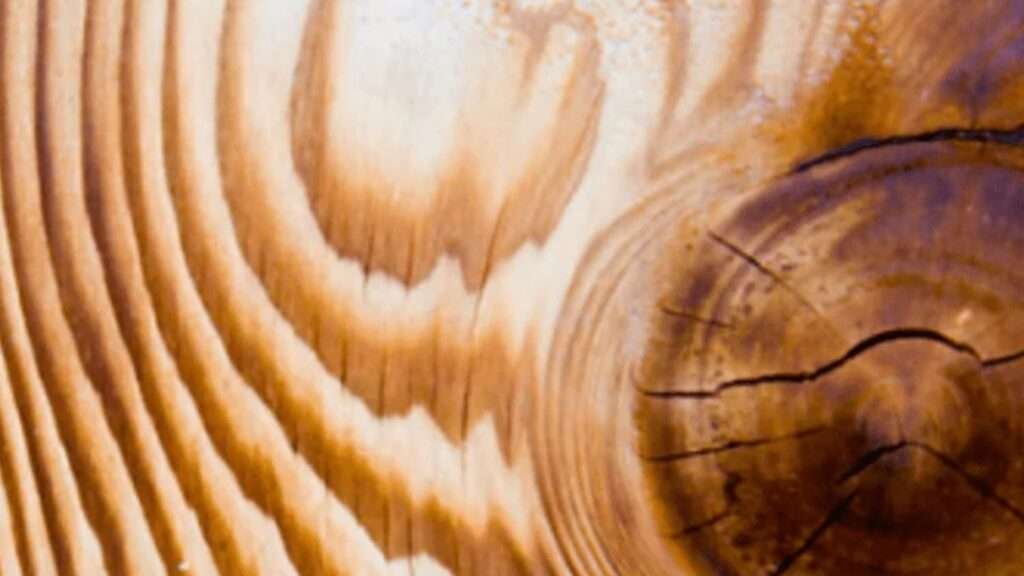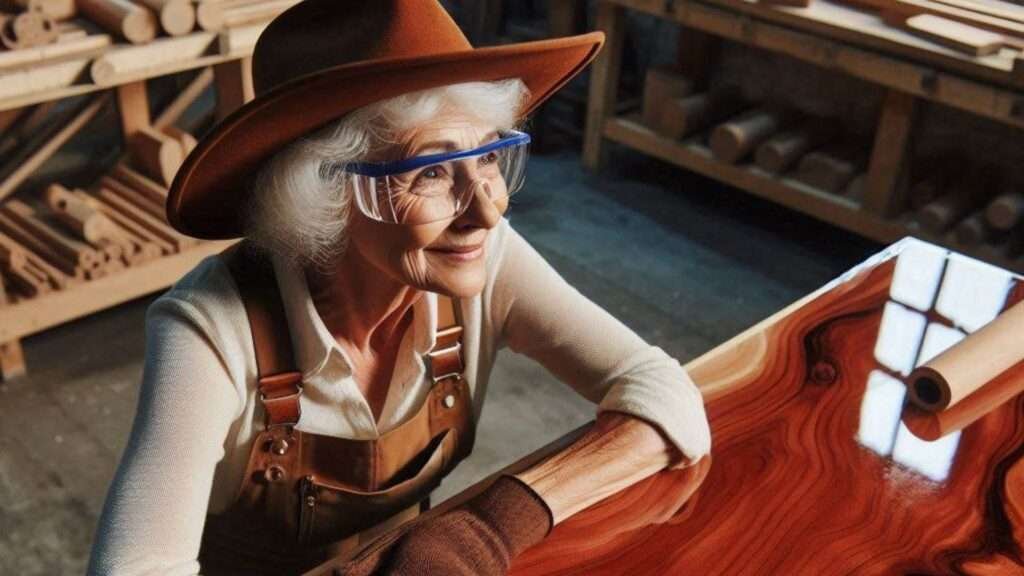The Most Popular Trees Used With Woodworking.
Choosing the right type of wood is critical in woodworking because it affects the durability, aesthetics, and functionality of the finished product.
The type of wood used can influence whether a piece is durable or prone to wear and tear. Furthermore, the appearance of the wood, including its grain and colour, is important in determining the finished piece’s visual appeal.
When selecting wood for a project, woodworkers must consider a number of factors. The grain pattern is frequently a primary consideration, as it influences both the appearance and structural integrity of the piece.
Straight-grain woods, such as oak, are easier to work with and have a uniform appearance, whereas woods with more complex grain patterns, such as cherry or walnut, can provide a unique and attractive finish but may be difficult to cut and shape.
Hardness is another critical factor. Hardwoods like maple and mahogany are known for their strength and resistance to scratches and dents, making them ideal for high-traffic furniture or flooring.
Softwoods, such as pine, are more forgiving and easier to work with, but they may not be as durable.
Workability is also important; it describes how easily the wood can be cut, shaped, and finished. Some woods, such as cedar, are known for their ease of workability, making them ideal for new woodworkers or intricate designs.
Others, like hickory, are more difficult to work with but provide superior strength.
The availability and cost of wood can have a significant impact on the material choice. Exotic woods may provide unique properties and stunning aesthetics, but they can be prohibitively expensive and difficult to obtain.
Locally available woods, on the other hand, are often less expensive and more environmentally friendly.
In essence, wood selection is a balancing act that involves determining the project’s specific requirements and matching them to the properties of various wood types.
Understanding these elements enables woodworkers to make informed decisions that improve the quality and longevity of their creations.
Popular Wood Species for Pyrography: Maple and Poplar.
Maple and poplar are highly favored by woodworkers for pyrography, owing to their unique characteristics that lend themselves well to this intricate art form. Each wood type offers distinct advantages, making them popular choices for both beginners and seasoned professionals.
Maple, known for its fine grain and light color, is particularly prized in the realm of wood burning art. The uniform and tight grain pattern of maple wood allows for the creation of highly detailed and precise designs.
Its light hue provides an excellent canvas that enhances the visibility of pyrography work, ensuring that intricate patterns and shading stand out vividly. Furthermore, maple’s hardness offers a durable surface that can withstand the heat and pressure applied during the burning process without warping or cracking, making it a reliable choice for long-lasting artwork.
Poplar, on the other hand, is celebrated for its affordability and ease of work. This wood is softer compared to maple, which makes it easier to engrave and burn, a feature that is especially beneficial for beginners who are still honing their pyrography skills.
Despite its softness, poplar holds designs well and provides a smooth surface that facilitates clean and even burns.
Its consistent texture and light coloration also contribute to its popularity, as the burned designs appear crisp and clear.
Additionally, poplar’s cost-effectiveness makes it an attractive option for large projects or for those who are experimenting with new techniques without the risk of high material expenses.
Both maple and poplar stand out as top choices for pyrography due to their combination of desirable properties.
Whether seeking the precision and visibility offered by maple or the ease and affordability of poplar, woodworkers can achieve stunning results with these versatile wood types.
Wood Species for Construction and Home Interiors.
When it comes to construction, certain wood species stand out due to their structural integrity, resistance to wear and tear, and availability.
Oak, for instance, is a popular choice for both residential and commercial construction. Its dense, hard nature makes it remarkably durable, providing long-lasting support for beams, flooring, and other structural elements.
Oak’s availability in both red and white varieties offers builders flexibility in terms of aesthetic preferences and functional requirements.
Pine is another widely used wood in construction, valued for its versatility and affordability. While it is softer than oak, making it easier to work with, pine still offers considerable strength and durability.
It is commonly used for framing, roofing, and even furniture making. Its light color and fine grain also make it a favorite for painting and staining, allowing for a wide range of interior design possibilities.
Spruce, often used in construction, is particularly noted for its lightweight and high strength-to-weight ratio.
This makes it an excellent material for structural components like joists and rafters. Spruce’s relatively straight grain and uniform texture also contribute to its ease of use in various construction applications.
Although not as resistant to decay as some hardwoods, proper treatment can enhance its longevity and performance.
For home interiors, the choice of wood often shifts to those known for their rich colors and elegant grain patterns.
Walnut, for example, is highly prized for its dark, luxurious appearance and fine grain. It is commonly used in high-end furniture, cabinetry, and decorative veneers. Walnut’s natural beauty and strength make it a timeless choice for interior design.
Cherry wood is another favorite for home interiors, appreciated for its smooth texture and warm, reddish-brown hues.
Over time, cherry wood darkens, adding depth and character to furniture pieces and paneling. Its workability and fine finish make it a preferred material for intricate carvings and detailed joinery.
Mahogany, known for its deep, reddish-brown color and straight, fine grain, is synonymous with luxury and sophistication.
It is frequently used in fine furniture, musical instruments, and decorative accents. Mahogany’s resistance to moisture and decay also makes it suitable for high-quality woodwork in humid environments.
In summary, the selection of wood species for construction and home interiors hinges on both functional requirements and aesthetic preferences. Whether it’s the robustness of oak and pine for structural applications or the rich elegance of walnut, cherry, and mahogany for interior decor, each wood type offers unique advantages that cater to various woodworking projects.
Best Woods for Outdoor Projects and Flooring.
When selecting wood for outdoor projects, it is essential to choose types that are inherently resistant to weather conditions and pests. Woods such as cedar, redwood, and teak are prime candidates for outdoor use due to their natural durability and resistance.
Cedar, with its pleasant aroma and natural oils, offers excellent resistance to decay and insects, making it a popular choice for decks, fences, and outdoor furniture.
Similarly, redwood is valued for its stability and resistance to moisture and insects, which ensures longevity even in harsh environmental conditions.
Teak, renowned for its oily texture and robustness, remains an unparalleled choice for outdoor furniture and boat building, thanks to its exceptional weather resistance.
For flooring, the demand for hardwoods like oak, maple, and hickory remains high due to their combination of durability and aesthetic appeal.
Oak, available in red and white varieties, is appreciated for its strength and ability to withstand heavy foot traffic, making it ideal for high-traffic areas in homes or commercial spaces.
Maple, with its fine, uniform texture and lighter color, offers a sleek and modern look while being highly resistant to wear and tear.
Hickory, known for its robustness and distinctive grain patterns, provides a rustic charm while being one of the hardest domestic woods, ensuring scratch resistance and longevity.
In both outdoor projects and flooring applications, the importance of scratch resistance and ease of maintenance cannot be overstated.
Woods such as oak and hickory for flooring are not only stunning but also practical, as they require minimal maintenance and withstand daily wear.
For outdoor projects, choosing woods like cedar and teak ensures that the structures will endure the elements with little upkeep, providing both beauty and functionality over time.
Wood Choices for Cladding, Linings, and Joinery.
When it comes to selecting wood for cladding and linings, certain species stand out due to their unique properties that offer both aesthetic appeal and functional benefits.
Cedar and larch are among the top choices for these applications.
Cedar, known for its natural resistance to decay and insect infestation, is often favored in external cladding due to its durability and the pleasant aroma it emits. Its natural oils act as preservatives, making it an excellent option for weather-exposed surfaces. Additionally, cedar’s rich color variations and fine texture enhance the visual appeal of any structure.
Larch, another valuable wood for cladding and linings, is renowned for its strength and resilience.
It boasts a high density and natural resistance to moisture, which makes it particularly suitable for areas with high humidity levels.
Larch also offers a warm, golden hue that can be left to weather naturally or treated to maintain its original color. Both cedar and larch are effective in providing natural insulation, contributing to energy efficiency in buildings.
For joinery, the focus shifts towards hardwoods that ensure strength and precision. Beech and ash are prime examples, each bringing distinct attributes to woodworking projects.
Beech is appreciated for its uniform texture and fine grain, which facilitate smooth finishes and detailed work. Its hardness and bending strength make it ideal for crafting durable and complex joints, ensuring the longevity of the structure.
Ash, on the other hand, is known for its remarkable elasticity and toughness.
Its straight grain and light color make it a versatile choice for various joinery applications. Ash’s ability to absorb shock without splintering is particularly valued in furniture making and intricate woodwork.
The combination of strength and workability makes ash a preferred material for creating precise and enduring joints.
Wood Selection for Windows, Doors, and Roofing Shingles.
When selecting wood for windows and doors, several factors come into play, including stability, durability, and ease of finishing.
Among the preferred wood types for these applications, pine, fir, and mahogany stand out.
Pine is a popular choice due to its affordability and ease of use. It offers a smooth finish, making it ideal for painting or staining, and provides sufficient stability for window and door frames.
Fir, on the other hand, is celebrated for its strength and straight grain, which ensures a stable and uniform surface.
This wood type is less prone to warping and twisting, making it a reliable option for structural applications. Additionally, fir’s natural resistance to decay and insects adds to its utility in window and door construction.
Mahogany is another highly regarded wood type for windows and doors, noted for its rich, reddish-brown color and fine grain.
It is extremely durable and resistant to rot and insects, making it a long-term solution. Mahogany’s excellent workability enables intricate designs and high-quality finishes, which improve the aesthetic appeal of any woodworking project.
Cedar is the most commonly used wood for roofing shingles. Its natural resistance to rot, decay, and insect infestation makes it ideal for outdoor use. Cedar shingles are well-known for their ability to withstand extreme weather conditions, including heavy rain and direct sunlight.
Cedar weathers beautifully over time, developing a silver-gray patina that enhances the character of any structure.
The lightweight nature of cedar also makes it easier to handle and install, reducing labor costs and time.
Furthermore, cedar’s thermal insulating properties contribute to energy efficiency, making it an environmentally friendly option.
With its balance of durability, aesthetic appeal, and natural resilience, cedar remains a top choice for roofing shingles in various architectural styles.
Specialty Woods for Park Benches, Wine Barrels, and Furniture.
When it comes to crafting park benches, durability and weather resistance are paramount. Oak and teak stand out as exceptional choices.
Oak, known for its strength and robustness, can endure the harshest outdoor conditions, making it a reliable option for public seating.
Its dense grain structure is highly resistant to insect infestations and decay, ensuring longevity.
Teak, on the other hand, is renowned for its natural oils that protect it from moisture and pests.
This makes teak an ideal candidate for outdoor furniture, as it requires minimal maintenance while retaining its elegant appearance over time.
For the crafting of wine barrels, oak is the undisputed wood of choice. The unique properties of oak contribute significantly to the flavor profile and aging process of wine.
The wood’s porous nature allows for a controlled exchange of oxygen and the slow infusion of tannins, which add complexity and depth to the wine.
Moreover, oak imparts desirable aromas and flavors such as vanilla, spice, and caramel, enhancing the overall drinking experience.
The structural integrity of oak also ensures that barrels can be reused over multiple aging cycles, providing long-term value.
High-quality furniture demands wood species that not only exhibit aesthetic appeal but also offer superior workability.
Cherry, walnut, and mahogany are among the top contenders. Cherry wood is favored for its rich, reddish-brown color and smooth texture, which darkens beautifully with age.
Its fine grain makes it easy to carve and shape, allowing for intricate designs. Walnut is prized for its deep, chocolate-brown hue and stunning grain patterns.
It is a versatile wood that can be used for both traditional and contemporary furniture styles. Mahogany, with its reddish-brown tint and straight grain, is celebrated for its stability and resistance to warping.
These qualities make it a preferred choice for crafting elegant and enduring furniture pieces.
Wood Properties: Scratch Resistance, Grain, and Growth Regions.
Choosing the right wood for your woodworking projects involves understanding various properties such as scratch resistance, grain structure, and growth regions.
These factors greatly influence the durability, appearance, and workability of the wood.
Scratch resistance is a critical factor, especially for furniture and flooring. Hardwoods like hickory and oak are renowned for their high resistance to scratches and dents.
Hickory, in particular, stands out due to its exceptional toughness, making it ideal for heavy-use items. On the other end of the spectrum, softer woods like pine are more susceptible to scratches and dents, which may not be suitable for high-traffic areas but can be advantageous for projects requiring easy shaping and carving.
The grain structure of wood significantly affects its aesthetic and workability. Finer-grained woods like maple and cherry offer a smooth, uniform appearance, making them popular for cabinetry and fine furniture.
These tight grains also contribute to the wood’s strength and resistance to chipping. Conversely, coarse-grained woods like oak and ash display a more pronounced texture, adding character to rustic and traditional designs.
However, the open grain can make these woods more prone to splintering if not handled properly.
The growth duration and regions where trees are cultivated also impact the properties of the wood.
For instance, hardwoods such as walnut and cherry, which grow slower and in temperate climates, tend to be denser and more durable.
Softwoods like pine, which grow rapidly in various climates, are more abundant and sustainable but generally less durable.
Understanding these growth patterns helps in selecting wood that meets both environmental and project-specific needs.
In terms of susceptibility to damage, woods like mahogany and teak offer high resistance to chipping and denting, making them excellent choices for high-end furniture and outdoor applications.
Their natural oils also contribute to their durability and resistance to decay. On the contrary, woods such as cedar and fir, while aesthetically pleasing and aromatic, may require more care to avoid damage.
In summary, balancing scratch resistance, grain structure, and growth regions is essential for selecting the ideal wood for your woodworking projects.
Each species offers unique benefits and challenges, making it crucial to match the wood’s properties with the specific demands of your project.



